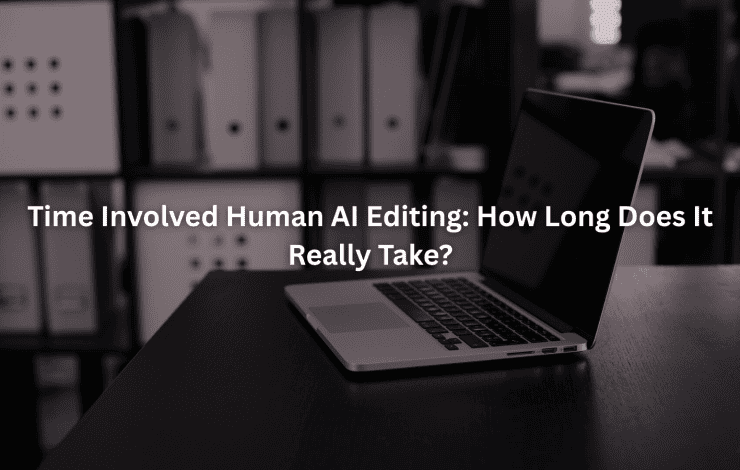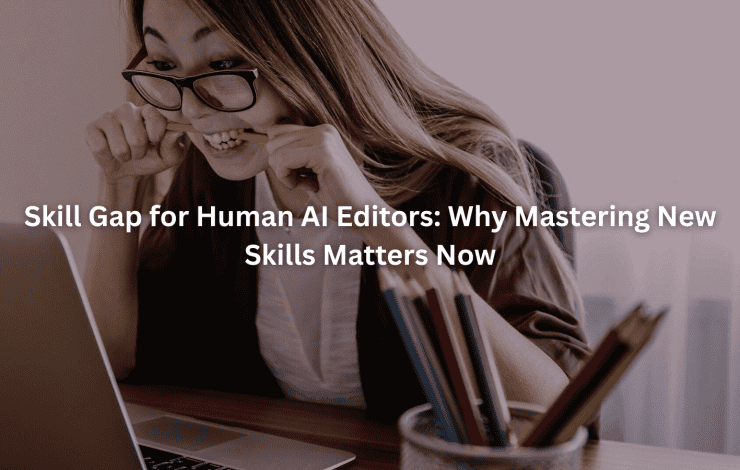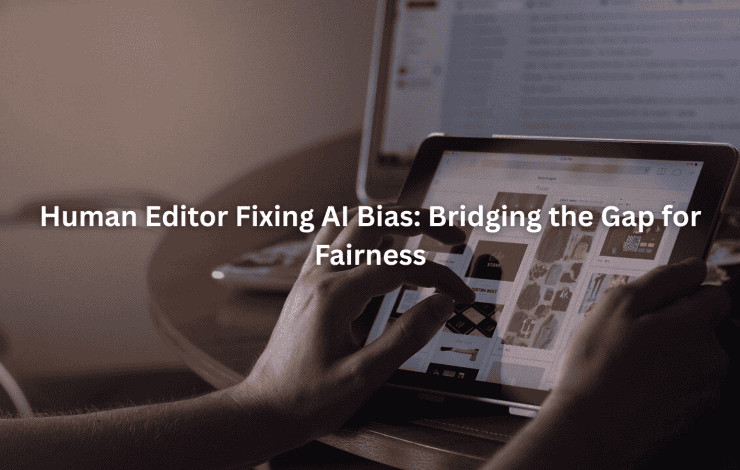Everyone’s buzzing about AI editors these days – those smart programs that can polish up writing faster than any human could flip through a style guide. Sure, they’re impressive, but they’re also causing some sweaty palms in newsrooms across the country. Some writers love them, others think they’re killing the craft. What’s really going on behind all those algorithms and auto-corrections?
The whole thing’s messy, if we’re being honest. These programs are getting pretty good at catching basic mistakes, but they’re also bringing up some thorny questions about who’s really in charge of the words we read. And let’s not forget about all those editors wondering if their red pens are about to become museum pieces.
Key Takeaway
- These AI programs can pick up bad habits from biased training data (like assuming doctors are always “he” and nurses are always “she”)
- Someone needs to keep an eye on what these programs are doing – computers don’t understand context like humans do
- We need to figure out how to use AI without turning skilled editors into button-pushers
Algorithmic Bias and Ethical Challenges
Sources of Bias in AI Models
Ever notice how these AI writing tools sometimes sound like they’re stuck in the 1950s? That’s because they’re learning from old articles, outdated books, and whatever else gets fed into their digital brains. Like a kid who only hangs out with one group at school, these programs pick up bad habits – maybe assuming all doctors are men, or writing about certain neighborhoods in ways that make people cringe.
Some numbers hit pretty hard: about two-thirds of reporters don’t trust these AI editors to play fair with different voices and viewpoints. Sure, they’re quick, but speed isn’t worth much if the story comes out tone-deaf or just plain wrong. [1]
Mitigation Strategies
Nobody’s found a perfect fix yet, but some news outlets are getting smarter about it. They’re checking their AI tools for bias like they’d fact-check a controversial story. And they don’t just set it and forget it – they keep tweaking and adjusting when things go sideways, addressing the real challenges for human editors of AI content before it reaches the public.
Take what’s happening at Jet Digital Pro (where they’re actually doing something about this mess). They’ve got real editors watching these AI programs like hawks, making sure the machines don’t run off and do something stupid. It’s kind of like having a seasoned pro looking over your shoulder, catching stuff before it hits the public.
Impact on Content Fairness and Inclusivity
When nobody’s watching these AI editors, they can really mess things up. Stories start sounding like they’re written for just one kind of reader, leaving everyone else out in the cold. That’s how you lose readers’ trust – fast.
Think about it: if your local paper suddenly started writing like it’s only for one neighborhood or one type of person, wouldn’t you start looking elsewhere for news? That’s why mixing different voices into these AI systems isn’t just about being nice – it’s about getting the story right. Period.
Data Privacy and Intellectual Property
Protecting Sensitive Information
News organizations handle pretty sensitive stuff – private details, off-record comments, and information that could get people in trouble if it leaked. Now throw AI into that mix. These programs need tons of data to work right, but nobody’s quite sure where all that information ends up. It’s kind of like handing your diary to a stranger and hoping they don’t share it.
Copyright and Plagiarism Concerns
Here’s another headache – these AI programs learn by reading everything they can get their digital hands on. Sometimes they spit out writing that sounds weirdly familiar, like that kid in class who “accidentally” copied his essay from Wikipedia. News outlets are scrambling to figure out what’s fair use and what’s stealing.
Legal and Ethical Frameworks
Editors can’t just shrug and blame the computer when something goes wrong. Someone’s got to take responsibility for what gets published, AI or not. More newspapers are writing up rules about using AI – basic stuff like “double-check everything” and “don’t let the machine write sensitive stories,” along with asking the right questions to a human AI editor before approval.
Socioeconomic Implications of AI Editing
Job Displacement and Skill Degradation
Let’s be real – editors are worried about their jobs. When you’ve got programs that can fix grammar and suggest better words in seconds, what happens to the people who’ve spent years mastering that craft? Some veteran editors (with 15+ years of experience) say they’re already feeling less sharp, like their skills are getting rusty. [2]
Overreliance on AI Technologies
It’s getting way too easy to hit that “auto-correct” button and call it a day. But good editing isn’t just about fixing commas – it’s about making sure stories make sense and hit home with readers. The folks who’ve been at this a while say they can smell when something’s off in a story. No computer program’s got that kind of gut instinct yet.
And you know what? The best newsrooms aren’t trying to replace their editors – they’re helping them use AI like any other tool in their toolkit. Much like weighing the pros and cons of a human vs AI tool, they see technology as a way to sharpen skills rather than erase them, just as spell-check never killed off copy editors.
Addressing Workforce Concerns
Strategies for integrating AI into editorial workflows should focus on enhancing human skills rather than replacing them. Training and upskilling editors to work alongside AI can mitigate job loss fears and promote a collaborative environment.
Safeguarding Against Misinformation
Risks of AI-Generated False Content
Another significant concern is the potential for AI-generated misinformation. With the capability for “hallucinations” — instances where AI produces inaccurate or nonsensical outputs — there’s a risk that public trust in media could erode.
Verification and Fact-Checking Protocols
To combat this, human review remains critical. Implementing tools and methods for verifying AI outputs can help maintain the integrity of the content.
Promoting Ethical Content Creation
Encouraging responsible AI use in publishing involves collaboration between AI developers and human editors. At Jet Digital Pro, we prioritize ethical content creation by ensuring that our AI tools enhance, rather than undermine, the editorial process.
Emerging Ethical Guidelines and Regulations
The development of ethical frameworks tailored to AI editing is essential. Professional organizations and institutions play a crucial role in establishing guidelines that respect both innovation and ethical considerations.
Regulatory Approaches Worldwide
As different countries begin to address AI ethics through policy, it’s important to balance innovation with ethical safeguards. Clear regulations can guide the responsible use of AI in content editing.
Encouraging Transparency and Accountability
Transparency is critical in maintaining trust. Public reporting and disclosure mandates can foster accountability in AI deployment. Encouraging organizations to adopt ethical practices not only benefits their reputation but also upholds the standards of the industry.
Best Practices for Responsible AI Editing
Combining Human and AI Strengths
Effective workflows that integrate human oversight with AI capabilities can enhance the editing process. By leveraging AI for efficiency while ensuring that human editors maintain control over the output, organizations can strike a balance that benefits all.
Continuous Education and Awareness
Training editors on ethical AI use is critical. Promoting an understanding of AI limitations and risks can empower editors to make informed decisions about when and how to use AI in their workflows.
Collaboration Across Stakeholders
Are You a Digital Agency?
White Label SEO Content Services for Agencies
Scalable, customizable, and results-driven content solutions for your clients.
Engaging developers, users, and regulators in discussions about ethical AI practices is essential. Building trust through shared commitments to ethical standards can lead to a more responsible approach to AI in editing.
FAQ
How can AI transparency be improved in the editorial process without compromising efficiency?
AI transparency in editing means showing how AI tools make decisions and what data they use. This requires AI editorial transparency reports, clear AI ethics policies, and AI accountability measures.
By combining AI human oversight with detailed AI content auditing, editors can detect algorithmic bias, AI content manipulation, or AI editorial bias early. Responsible AI editing also benefits from AI bias detection and AI bias mitigation methods.
What steps can reduce algorithmic bias while maintaining AI editorial integrity?
Reducing algorithmic bias in content editing involves using AI bias correction tools, implementing AI editorial guidelines, and following AI ethical frameworks. AI human collaboration is critical for AI content verification and AI content reliability checks.
Editors should integrate AI content ethics training to detect AI misuse risks, AI misinformation, and AI editorial bias. Consistent AI editorial monitoring supports AI responsible use and fairness in editorial decision-making.
How should AI data privacy be managed when editing sensitive material?
AI data privacy in content editing requires AI data security protocols, AI privacy protection systems, and strict AI data ethics compliance. AI editorial workflows should minimize personal data exposure while still meeting AI editorial quality control needs.
AI ethical guidelines and AI technology ethics demand AI legal compliance to prevent AI copyright infringement or AI intellectual property violations during editing. Transparent AI content monitoring ensures AI trustworthy practices.
In what ways does AI job displacement impact human oversight in editing?
Need a Strategic SEO Content Partner?
Let’s craft SEO content that ranks, converts, and grows your brand.
Talk to UsAI job displacement can affect AI human collaboration by reducing opportunities for AI editorial responsibility. However, AI human oversight remains essential for AI content authenticity, AI academic integrity, and AI editorial standards.
AI impact on jobs can be balanced by using AI work ethics policies, AI ethical education, and responsible AI editing practices. This helps maintain AI editorial control while preserving the human role in AI editorial decision-making.
How can AI plagiarism and AI copyright issues be prevented in editing workflows?
AI plagiarism prevention requires AI content authenticity checks, AI content creation ethics training, and AI copyright infringement detection tools. Editors must follow AI ethical standards and AI legal compliance measures to avoid AI intellectual property violations.
AI academic integrity is safeguarded by AI content monitoring, AI editorial oversight, and AI ethical responsibility frameworks. Maintaining AI editorial integrity also involves AI content reliability checks and AI trustworthiness audits.
Conclusion
Navigating ethical concerns in human-AI editing means tackling algorithmic bias, safeguarding data privacy, and addressing job and misinformation impacts. At Jet Digital Pro, collaboration ensures AI innovation enhances—rather than compromises—the art of storytelling. We commit to transparency, quality, and preserving editorial integrity.
Ready to scale your agency with ethical, AI-enhanced content? Contact Jet Digital Pro today to explore white-label SEO solutions that blend efficiency with human expertise.
References
- https://www.chapman.edu/ai/bias-in-ai.aspx
- https://ijesty.org/index.php/ijesty/article/view/830
Related Articles
- https://jetdigitalpro.com/challenges-for-human-editors-of-ai-content/
- https://jetdigitalpro.com/questions-to-ask-a-human-ai-editor/
- https://jetdigitalpro.com/pros-and-cons-human-vs-ai-tool/
P.S – Whenever you’re ready,
we’re here to help elevate your SEO content.
Partner with us for strategic, scalable content that drives real organic growth.
Contact Us Now






